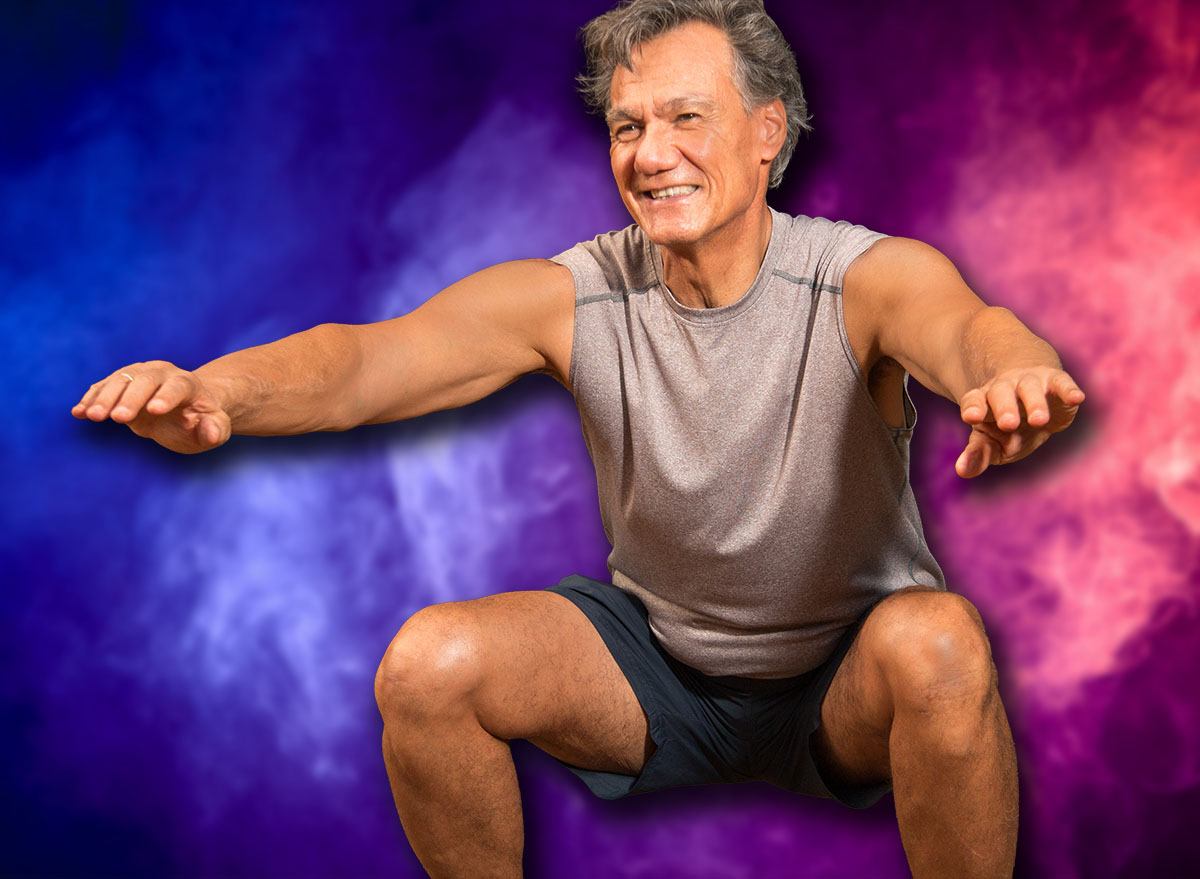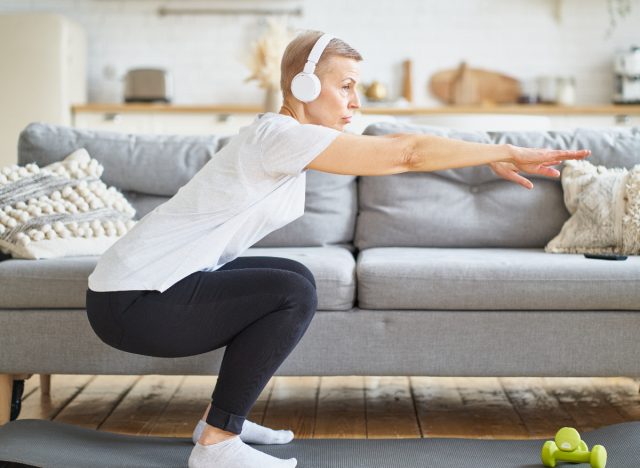If You Can Do This Many Squats After 50, You Are in Great Shape

Your 50s come up pretty fast in life. If you’ve taken good care of yourself, chances are you’re pretty fit for your age. But how can you really tell? We took the guesswork out of the equation by speaking with an expert—and learned exactly how many squats you should be able to do to see if you’re in top form.
Squats are a stellar bodyweight move to keep in your regular rotation after 50. They improve balance, coordination, and lower-body strength while helping to build lean muscle and boost bone density.
“Squats are one of the most functional movements we do as humans on a daily basis. As we age, our lower-body strength starts to decline. It’s important to continuously train and maintain strength in our lower extremities because our legs are the foundation of our body movement,” explains Joshua King, personal training leader at Life Time Gainesville (VA).
This exercise fires up your core, glutes, quads, hamstrings, and calves to help you tackle daily tasks like walking, sitting, and climbing stairs with ease.
If You Can Do This Many Squats After 50, You Are in Great Shape
According to King, a solid benchmark to aim for is performing 50 consecutive bodyweight squats with controlled technique—lowering to at least parallel to the ground.
“I cue this movement pattern as ‘smooth and continuous, like an escalator.’ Maintain an even tempo throughout without dropping, bouncing, or jerking at the bottom,” King says.
This endurance level signals excellent lower-body strength, cardiovascular efficiency, joint mobility, coordination, and stability.
“It’s a simple test that reflects real functional capacity,” King adds.
King stresses the importance of mastering proper range of motion and form before adding resistance or volume. When it comes time to safely progress, he recommends starting with supported squats (using a wall or sturdy chair for balance), then moving into bodyweight squats, emphasizing slow, controlled movement—counting to 3 or 4 seconds as you lower. Gradually incorporate greater depth, more reps, and light external resistance, such as a kettlebell, dumbbells, or barbell.
How Squat Endurance Correlates with Balance and Fall Prevention

Squat endurance trains your hips, core, and leg muscles to work in unison under fatigue. This enhances control and balance in daily movements.
“As we age, this coordinated strength helps prevent falls, protects the spine, supports joint alignment, and maintains smooth, confident movement patterns during activities like getting up from a chair, walking stairs, or catching yourself if you trip,” King explains.